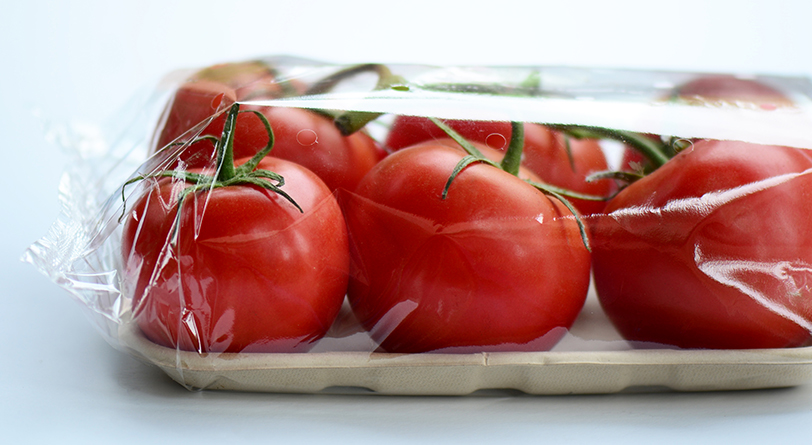Experts: Consumers Key to Tracking Food Waste

Researchers estimate that the average family of four in the United States spends about $1,500 a year on food that is never eaten, according to research cited in a draft federal strategy for reducing food waste, unveiled in late 2023.
What has been harder to calculate are the reasons why so much food ends up in the trash. Nonetheless, a better understanding is critical to the success of any efforts to reduce food waste, efforts that are expected to lean, in part, on consumer education.
“It’s consumer studies that we need the most,” says Kyla Fisher, program director for AMERIPEN—American Institute for Packaging and the Environment, a materials-inclusive trade group for the packaging industry. But, she says, “consumer studies are some of the hardest data points to get.”
The challenges include the biases that arise when people are asked to report on their own behavior, Fisher says. Funding is another issue. Packaging companies, meanwhile, are often reluctant to share what is working because of competitive concerns, while sustainability advocates are reluctant to recognize the role packaging can play in reducing food waste.
“This fear of packaging is a big hindrance, given the data that says it’s an effective tool,” Fisher says.
What We Know
Some of the earliest research on packaging and food waste was a 2016 study by a nonprofit called ReFED, or Rethinking Food Waste Through Economics and Data, a collaborative effort involving more than 30 business, nonprofit, foundation, and government leaders.
The study, a road map to reducing food waste by 20%, cited packaging adjustments as one of the most economical solutions for preventing waste. The recommended adjustments included adopting packaging that prolonged freshness and better labeling to reduce confusion about when food had expired.
The ReFED study estimated up to 90% of Americans throw out still-edible food due to confusion around the meaning of labels like “sell by,” “best by,” “use by,” and “best before,” accounting for about $29 billion in wasted consumer spending.
Around the same time, the Rockefeller Foundation released a report that said packaging can play a role in nudging consumer behavior to reduce food waste, says Fisher.
Since then, AMERIPEN has worked on studies designed to close the gap in understanding and better delineate the role packaging can play in reducing food waste while advancing a circular economy, she says.
“For the most part, consumers have no concept of how packaging can help them,” Fisher says.
Integrating Solutions
The popular perception of packaging is often affected by messages that paint it as an environmental problem. “We are kind of scared to embrace the idea of packaging,” Fisher says.
When packaging is mentioned as a solution, the emphasis is on switching to bio-based sources and ramping up recycling.
Compounding the issue is a tendency among policymakers to look at environmental challenges in isolation, Fisher adds. “Climate change is over here, food waste is over here, packaging pollution is over here, as opposed to looking at the need to integrate all of these.”
Nonetheless, when consumers understand the role of packaging, they tend to see its value, according to research from the School of Packaging at Michigan State University (MSU). Consumers even indicated they would pay more for packaging that extends the freshness and shelf life of the food they buy.
According to a recent study led by Dr. Eva Almenar, the top reasons for household food waste were half-eaten packaged food products and unpackaged food that spoiled before it was eaten.
“MSU’s research and data highlight an opportunity to support the development of packaging designs that extend food shelf life and reduce waste and to educate consumers about the important role that packaging plays in achieving those goals,” says Almenar, a professor in the university’s packaging school and a pioneer in researching the intersection between packaging and household food waste in the United States.
Signs of Progress
While the amount of wasted food has not budged much over the past decade of research, some advances have been made.
Resistance has fallen, for example, to efforts to donate unused food, says Michael Richmond, a principal at PTIS LLC, a packaging consulting firm. People previously balked over potential safety issues, he says, “but we’ve gotten past that.”
Beverage companies, meanwhile, are producing smaller eight-ounce soda cans, which leads to less waste, he says. The trend has even been popularized in ads featuring former pro basketball star Shaquille O’Neal.
Nonetheless, there is room for improvement, Richmond says. He cites large U.S. restaurant portions as one example, noting the generally smaller portions served in Europe. “A doggy bag in Europe is really meant for the dog to take if there is anything left,” he says.
European countries also are further ahead when it comes to consumer education, thanks to organizations like the Waste Recovery Action Programme, a British nonprofit.
Nonetheless, recent efforts in the U.S. demonstrate the potential, Richmond says. Citing MSU research, for example, he says consumers were open to tuna packaged in a resealable retort pouch, rather than a can, once they understood the pouch’s benefits.
“What we need to do as FPA (Flexible Packaging Association) members is to get this information, knowledge, and insight to our brand-owner partners and consumers about where and how flexible packaging can help,” he says.
The messages may resonate more clearly with younger generations, he adds. “Millennials are the ones who are helping drive sustainability because they’re much more environmentally conscious, even to the point of not accepting a job if the company doesn’t have a strong environmental program.”
Joel Berg is a freelance editor and writer based in York, Pennsylvania.


